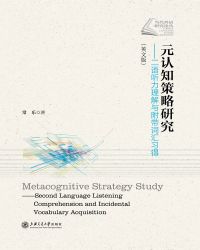1.3.4 Relationships among the Three Constructs
您可以在百度里搜索“元认知策略研究:二语听力理解与附带词汇习得(英文版) 艾草文学(www.321553.xyz)”查找最新章节!
1.3.4 Relationships among the Three Constructs
Learners with high listening proficiency are likely to make extensive use of context and employ top-down processing in listening. Proficient listeners keep monitoring their listening process. When meeting an unknown word while listening, they generally employ inferencing and are flexible in the combination of top-down and bottom-up processing, which is a reflection of higher metacognitive awareness and better metacognitive strategy control and use. On the contrary, listeners with low proficiency tend to make use of more bottom-up processing in listening and thus attend primarily to the sounds, syllables and words to build up information from the input. In other words, less proficient learners are likely to employ, especially when encountering listening difficulty, superficial and ineffective strategies such as translation. Research (e. g., Goh, 2002b; Smidt & Hegelheimer, 2004; Vandergrift, 1997b & 2003a) investigating the relationship between listening comprehension and metacognitive listening awareness has shown some positive results reporting a close and positive relationship between the two constructs.
Incidental vocabulary acquisition occurs through listening as well as through reading. Many L2 learners, like first language (L1) learners, rely on aural input as the primary source of information about the target language. Through listening they learn to identify the forms and sometimes meanings of new lexical items, which they then remember and in due course come to use themselves. Listening plays an important role in the language learning process as it provides learners with input which they can use to acquire new language and also consolidate the partially acquired knowledge. Inreturn, with increased lexical knowledge obtained from listening texts, learners' listening comprehension will be facilitated, though the effect may not be instant. Therefore, listening comprehension and incidental vocabulary acquisition can mutually facilitate each other.
When proficient learners meet with an unknown word in listening, they will need to employ inferencing strategies to guess the meaning of the word by using such clues such as cognate words and contextual clues. They then learn to identify the forms of words through building auditory images. In addition, they may be able to identify the meaning of a new lexical item through inferencing. These learners may then remember the new word, and in due course, come to use it. Therefore, metacognitive listening awareness potentially can facilitate incidental vocabulary acquisition from listening. This, however, is more likely to occur if learners possess the necessary proficiency to engage effectively in bottom-up processing.
Though the relationships among the three constructs are theoretically grounded, they need further investigation to provide proof. To the best of the author's knowledge, no previous study has investigated the interrelationships among the three constructs. 元认知策略研究:二语听力理解与附带词汇习得(英文版)


